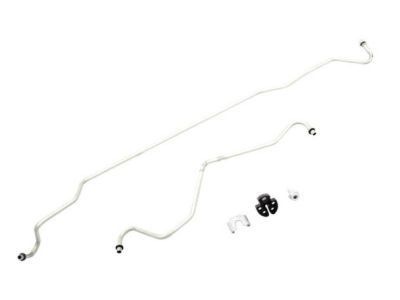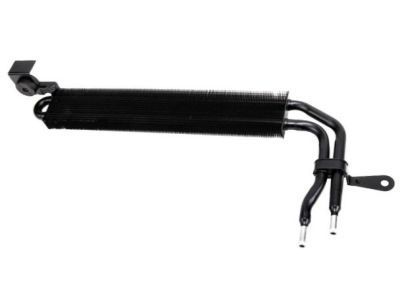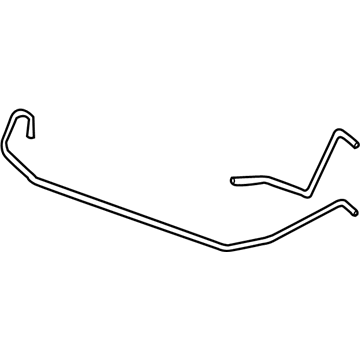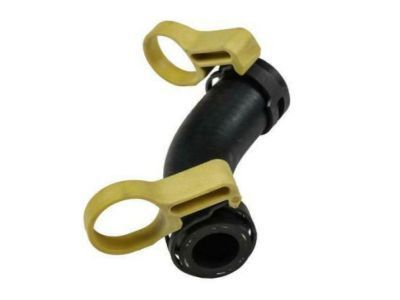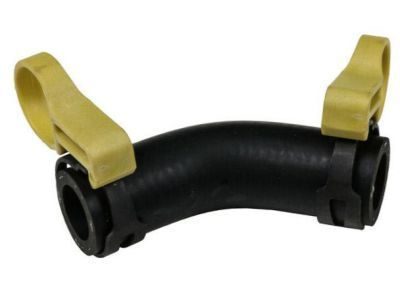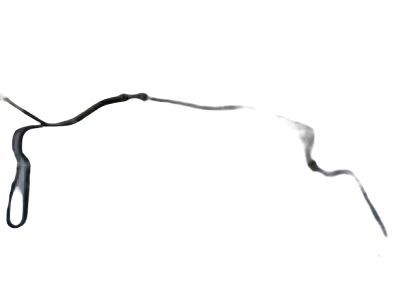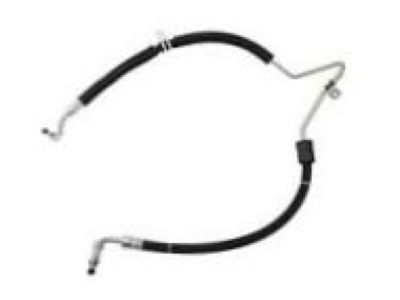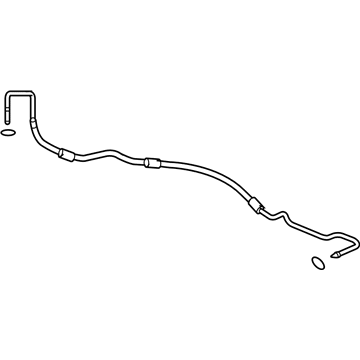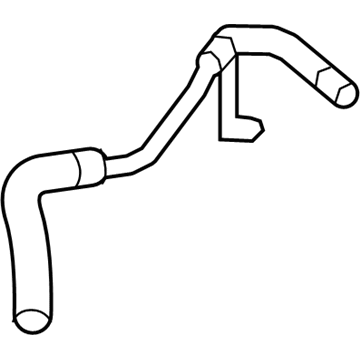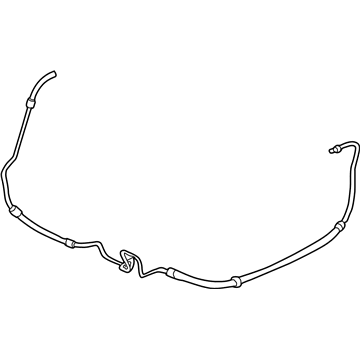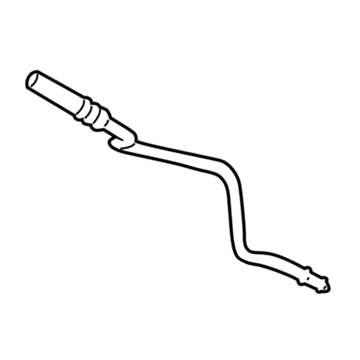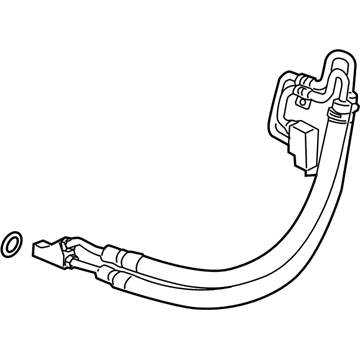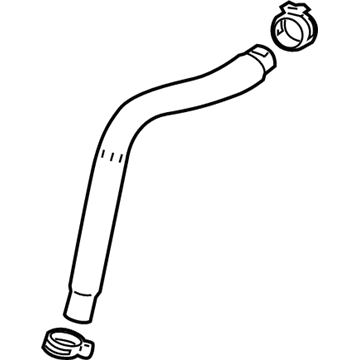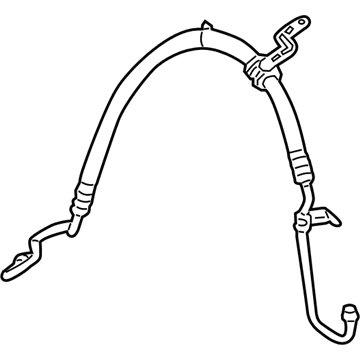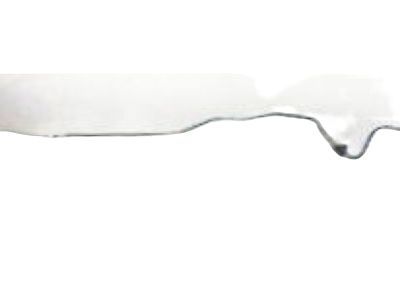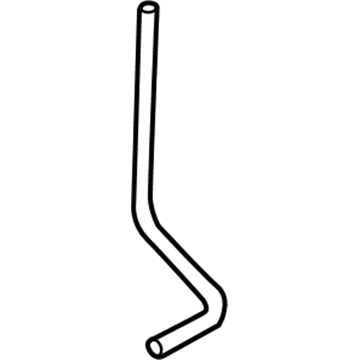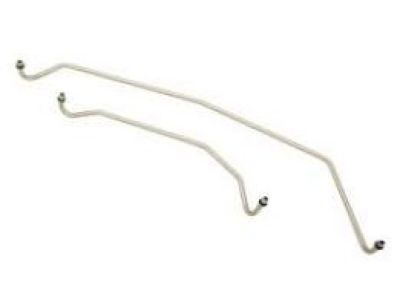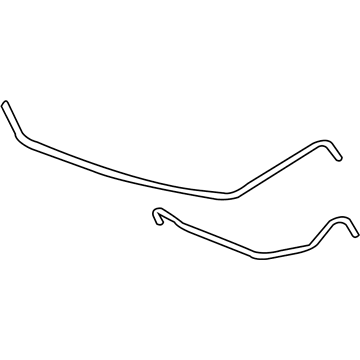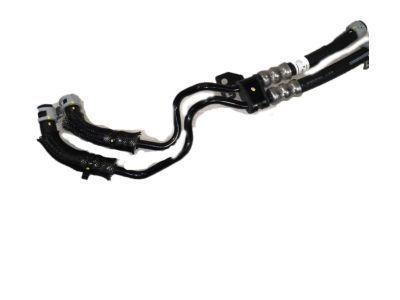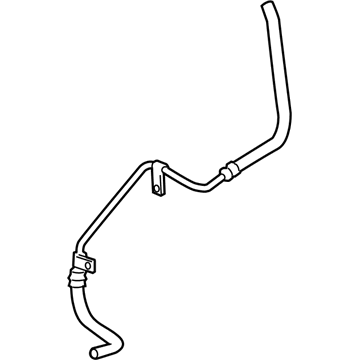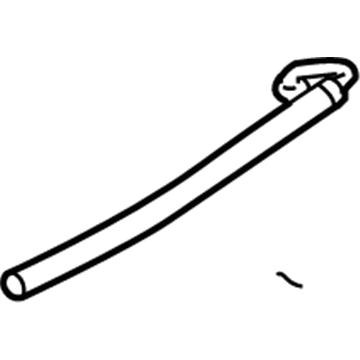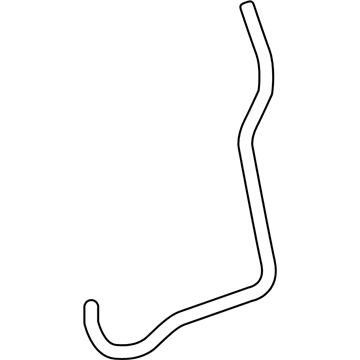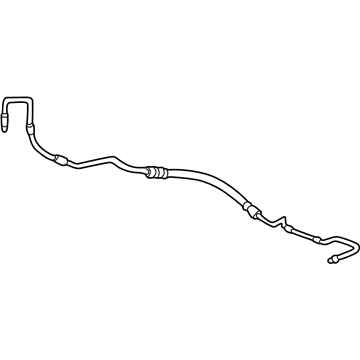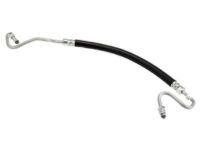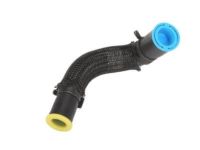ChevyParts
My Garage
My Account
Cart
OEM Cadillac Power Steering Hose
Power Steering Pressure Hose- Select Vehicle by Model
- Select Vehicle by VIN
Select Vehicle by Model
orMake
Model
Year
Select Vehicle by VIN
For the most accurate results, select vehicle by your VIN (Vehicle Identification Number).
174 Power Steering Hoses found

Cadillac Pipe Kit Part Number: 19177058
$89.71 MSRP: $146.85You Save: $57.14 (39%)Ships in 1-2 Business DaysProduct Specifications- Other Name: Pipe Kit, Steering Gear; Power Steering Hose; Pipe Kit, Steering Gear Oil Pressure

Cadillac Power Steering Return Hose Part Number: 21997868
$16.29 MSRP: $26.67You Save: $10.38 (39%)Product Specifications- Other Name: Hose Assembly-Power Steering Fluid Reservoir Outlet; Power Steering Hose; Reservoir Hose; Hose, Steering Gear Oil Return

Cadillac Power Steering Return Hose Part Number: 25768050
$27.09 MSRP: $33.23You Save: $6.14 (19%)Ships in 1-2 Business DaysProduct Specifications- Other Name: Hose, Power Steering Fluid Reservoir Outlet; Power Steering Hose; Reservoir Hose; Hose, Steering Gear Oil Return

Cadillac Power Steering Pressure Hose Part Number: 15794414
$119.02 MSRP: $202.64You Save: $83.62 (42%)Ships in 1-3 Business DaysProduct Specifications- Other Name: Hose Assembly-Power Steering Gear Inlet; Power Steering Hose; Pressure Hose; Hose, Steering Gear Oil Pressure
- Replaces: 15786639
Cadillac Lower Return Hose Part Number: 25821306
$31.89 MSRP: $52.19You Save: $20.30 (39%)Product Specifications- Other Name: Hose Assembly-Power Steering Gear Outlet; Power Steering Hose; Hose, Steering Gear Oil Return
Cadillac Power Steering Return Hose Part Number: 26070225
$112.03 MSRP: $184.54You Save: $72.51 (40%)Ships in 1-2 Business DaysProduct Specifications- Other Name: Hose, Steering Gear Oil Return; Power Steering Hose; Return Hose
Cadillac Rear Suction Hose Part Number: 20953767
$14.20 MSRP: $22.25You Save: $8.05 (37%)Ships in 1-3 Business DaysProduct Specifications- Other Name: Hose-Power Steering Fluid Reservoir Inlet; Power Steering Hose
- Replaces: 15872965, 20893362
Cadillac Power Steering Pressure Hose Part Number: 23247519
$164.63 MSRP: $271.21You Save: $106.58 (40%)Ships in 1-2 Business DaysProduct Specifications- Other Name: Hose Assembly-Power Steering Gear Inlet; Power Steering Hose; Pressure Hose; Hose, Steering Gear Oil Pressure
- Replaces: 23136456
Cadillac Power Steering Return Hose Part Number: 22808464
$42.89 MSRP: $68.10You Save: $25.21 (38%)Ships in 1-2 Business DaysProduct Specifications- Other Name: Hose-Power Steering Fluid Reservoir Outlet; Power Steering Hose; Reservoir Hose; Hose, Steering Gear Oil Pressure; Hose, Steering Gear Oil Return
Cadillac Power Steering Pressure Hose Part Number: 22792605
$64.74 MSRP: $101.40You Save: $36.66 (37%)Ships in 1-3 Business DaysProduct Specifications- Other Name: Hose Assembly-Power Steering Gear Inlet; Power Steering Hose; Pressure Hose; Hose, Steering Gear Oil Pressure
- Replaced by: 22855966

Cadillac Power Steering Return Hose Part Number: 25773286
Product Specifications- Other Name: Hose, Steering Gear Oil Return; Power Steering Hose; Upper Return Hose

Cadillac Pipe Kit Part Number: 19177057
Product Specifications- Other Name: Pipe Kit, Steering Gear; Power Steering Hose; Pipe Kit, Steering Gear Oil Pressure

Cadillac Power Steering Return Hose Part Number: 22970604
$46.00 MSRP: $72.04You Save: $26.04 (37%)Product Specifications- Other Name: Hose Assembly-Power Steering Fluid Cooler Inlet & Outlet; Power Steering Hose; Cooler Pipe; Hose, Steering Fluid Cooler
- Replaces: 20893361, 20850641, 20850642, 22876334, 20893354
Cadillac Power Steering Return Hose Part Number: 15224353
$98.53 MSRP: $154.32You Save: $55.79 (37%)Product Specifications- Other Name: Hose Assembly-Power Steering Fluid Reservoir Inlet; Power Steering Hose; Upper Return Hose; Hose, Steering Gear Oil Return
Cadillac Oil Line, Driver Side Part Number: 26068224
Product Specifications- Other Name: Pipe Kit; Power Steering Hose; Line Kit; Pipe; Pipe Kit, Steering Gear Oil Pressure
- Position: Driver Side
Cadillac Return Hose Part Number: 1631383
Product Specifications- Other Name: Hose, Power Steering Fluid Reservoir; Power Steering Hose; Hose, Steering Gear Oil Return
Cadillac Power Steering Return Hose Part Number: 25743804
Product Specifications- Other Name: Hose, Power Steering Gear Outlet; Power Steering Hose; Lower Return Hose; Hose, Steering Gear Oil Return
Cadillac Power Steering Return Hose Part Number: 15145898
Product Specifications- Other Name: Hose Assembly-Power Steering Fluid Reservoir Inlet; Power Steering Hose; Upper Return Hose; Hose, Steering Gear Oil Return
Cadillac Lower Return Hose Part Number: 26048269
Product Specifications- Other Name: Hose Assembly-Power Steering Gear Outlet; Power Steering Hose; Hose, Steering Gear Oil Return
Cadillac Power Steering Pressure Hose Part Number: 26073568
Product Specifications- Other Name: Hose Assembly-Power Steering Gear Inlet; Power Steering Hose; Pressure Hose; Hose, Steering Gear Oil Pressure
- Replaces: 26073125
| Page 1 of 9 |Next >
1-20 of 174 Results
Cadillac Power Steering Hose
Want to cut long-term maintenance and repair costs? Choose OEM Power Steering Hose. Those parts deliver top durability you can trust. On our site, you'll find a huge catalog of genuine Cadillac parts. Prices are unbeatable, so you can keep more in your pocket. Every OEM Cadillac Power Steering Hose includes a manufacturer's warranty. You can also get an easy return policy that keeps buying risk free. Fast delivery, get your car on the road quickly. It's simple to search, compare, and order. Stop guessing about quality or fit. Order today and save with parts that last.
Cadillac Power Steering Hose Parts Questions & Experts Answers
- Q: How to replace the Power Steering Hose without hydroboost on Cadillac Escalade?A:The process to replace Power Steering Cooler pipe/hose without hydroboost begins by detaching the front grille first. Start by detaching the clamp which maintains the power steering outlet hose at the power steering gear followed by unclamping the inlet hose from the Power Steering Pump . The next step requires removing the bolts which keep the Power Steering Cooler attached to the radiator support so you can extract it from the vehicle. After placement install the Power Steering Cooler and fasten its retaining bolts to 5 n.m (44 lb in). Attack the power steering outlet hose to the power steering gear then secure it using the retaining clamp. Finally you must attach the power steering inlet hose to the Power Steering Pump before installing its retaining clamp. Check for leakage from power steering system bleeding followed by inspection of all hose connections before you install the front grille.
- Q: How to replace the pressure power steering hose on a right-hand drive on Cadillac CTS?A:A replacement of the power steering pressure pipe/hose starts with placing a drain pan beneath the vehicle followed by air cleaner assembly removal. The first step includes vehicle suspension followed by removing the front air deflector. The first step requires removing the power steering pressure hose retaining nut which connects to the air conditioning compressor before lowering the vehicle. Use a pressurized Power Steering Pump to remove the power steering pressure hose from the pump. After elevating the vehicle again you can take off the pressure hose to cradle mounting bolt along with its retaining clips from the cradle. First disconnect the Power Steering Hose from the steering gear before taking away the power steering component from the vehicle. Install the pressure hose first by placing its retainers loosely into position before torqueing them down. The power steering pressure hose receives attachment to the vehicle while connecting to the power steering gear before tightening to 30 nm (22 ft. Lbs.). Place the retaining clips inside the cradle before tightening them securely on the cradle mounting bolt at 9 nm (80 inch lbs.). Lower the vehicle until you hear a distinct clicking sound when installing the power steering pressure hose fitting at the Power Steering Pump. Install the power steering pressure hose retaining nut to the air conditioning compressor and tighten the hose to pump fitting with 40 nm (30 ft. Lbs.) while the hose to air conditioning compressor nut receives 8 nm (71 inch lbs.) and the hose to cradle bolt requires 9 nm (80 inch lbs.) and its final connection to gear requires 30 nm (22 ft. Lbs.). Bleed the power steering system after reinstalling the front air deflector together with the air cleaner assembly then removing the drain pan.
- Q: How to replace the Power Steering Hose from the cooler to the power steering reservoir on Cadillac XLR?A:The first steps in changing the power steering cooler pipe/hose start with removing the air cleaner assembly along with the fuel injector sight shield. The clamp needs to be compressed first followed by disconnecting the power steering cooler pipe/hose from the Power Steering Reservoir. A vehicle lift enables workers to remove the retaining clip which lets them disconnect the power steering cooler pipe/hose from the cooler while 2 power steering pipe/hose routing bolts enable them to extract the cooler pipe/hose from the vehicle. Install the new power steering cooler pipe/hose by placing it into position and secure it with the 2 routing bolts which should be tightened to 11 n.m (97 lb in). Secure the power steering cooler pipe/hose to the cooler and use the retaining clip for attachment after which you can lower the vehicle. After setting the clamp compression you should connect the power steering cooler pipe/hose to the Power Steering Reservoir and then replace the fuel injector sight shield and the air cleaner assembly. As the last step you need to perform a power steering system fill and bleed process.
